The chimes of the church bell can be heard ringing in towns, villages and countryside across Malta and Gozo – and yet in many respects, they are taken for granted. A near ever present ring, the musical tune of which reveals not only the time but also a curious history that runs in parallel with events of much larger scale.
To understand the history of the bell, The Malta Independent met Kenneth Cauchi, a campanologist. He is a bell specialist – in their manufacture, tuning, installation and history.
So, what is the exact origin and use of the bell? The bell was pretty much the past equivalent of a mobile phone or the internet, Cauchi explains. It was a means of communication, and in Malta especially the bell served as a way of passing messages on from village to village. It was only much later that the bell developed into musical instruments, and indeed in the early days it was a luxury to have a tuned bell within the belfry.
Maltese traditions have always been tied to the island’s close connections to Sicily and Southern Italy, and the traditions surrounding bells is in many senses no difference. Indeed, Cauchi tells me, the bell technique used in Malta is very similar to the techniques used in Sicily and Southern Italy.
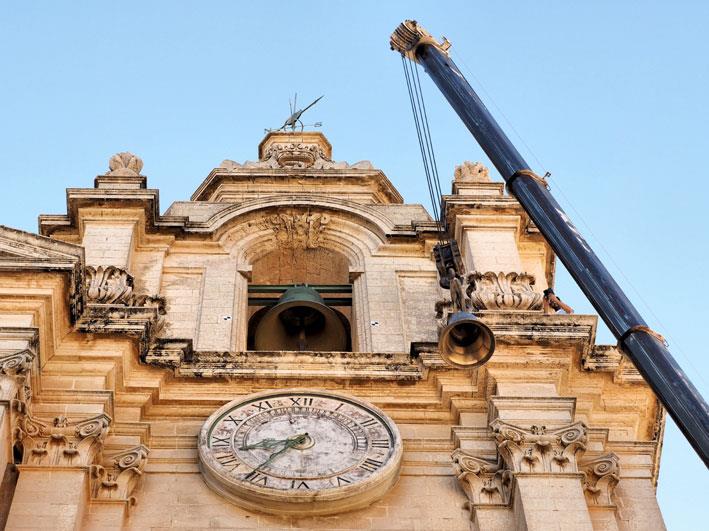
The first traces of bell founding in Malta
The first traces of bell founding in Malta can be dated to the Order of St. John. The Order had its own foundry on the island, Cauchi explains, but this was not one that specialised in making bells, rather it specialised in cannon and armour. Normally in peace time however the foundry, which was headed by a master founder appointed by the Order for life, would take commissions for bells. These bells though were of a lesser quality as they were made simply on the basis of size and weight. Cauchi in fact describes them as “bell-shaped cannon”.
That there are gaps in the chronology of bell founding however is not to mean that no bells were made in that period; it is possible that there were bells cast in these gaps but they simply do not exist anymore. Normally their disappearance can be attributed to wear and tear; “it’s like when you have two pair of shoes, and you use one for weddings and the other for work every day – the chances of the one you use for work tearing are much higher”, Cauchi summarises.
In the case that the bell does crack, the Kappillan would arrange a temporary measure; in other words, a bell would be borrowed from another church. There are cases where, Cauchi explains, these bells actually remain in these temporary places for many years. One case which Cauchi mentions for instance is in Msida, where one of the bells was actually lent to the church in 1874 and it is still there today; it’s spent more time in that church than in the church it was actually commissioned for, Cauchi chuckles.
The foundry was not the only source of bells in this period however; if one had the money and was willing to take the risk, they could commission a bell from a specialised founder abroad. An example of this is the bell that has just been lowered from the Mdina cathedral. This bell was cast in 1499 and was brought over from Italy; which in itself was a risk due to the presence of pirates in the seas between Malta and Sicily. In lieu of this risk, Malta-based foundries were generally preferred even though the product from abroad was generally far superior, Cauchi concludes.
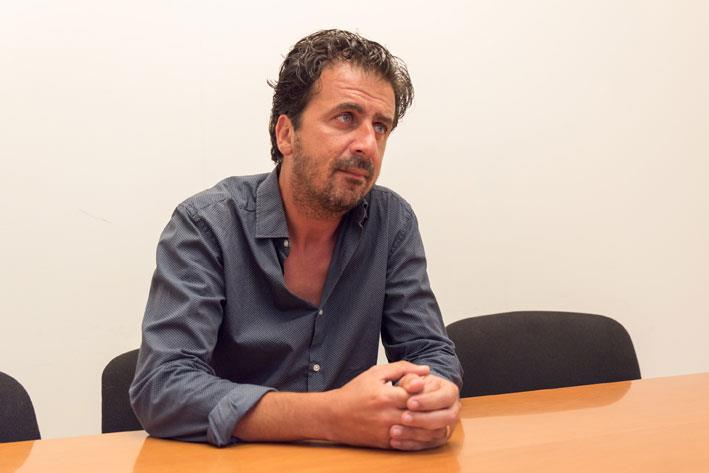
Early Maltese entrepreneurs; notable Maltese bell founders after the Order
In the later years of the Order, one can find Maltese metal-workers who try to be entrepreneurs and compete with the Order’s foundry. One such example is Giovanni Antonio Tanti who, following the death of one of the Order’s best founders in Aloisio Bouchut in 1766, tried his hand at the industry. He began to copy the profile of Bouchut’s bells; but this was limited to just the appearance of the bells because the acoustic results were in actual fact terrible. Evidence of this, Cauchi says, can be seen simply in how many of each founder’s bell are in existence today; there are around 50 Bouchut bells left as opposed to two Tanti ones. The fact that even these two bells still exist is by chance; one was barely used, and the other was sent to England for scrapping but was brought back to Malta after the priest preferred not to pay a tax on it and lose any potential value.
Later on, Cauchi tells me, we can see Sicilian bell founders actually setting up shop in Malta, and taking in Maltese apprentices. These apprentices eventually broke away and started their own trades. They were initially limited in skill but their children perfected their work as years passed. This is where Giuliano Cauchi comes into the pictures. He and his brothers established a bell foundry in 1854 and it soon became the most capable foundry on the island. However it was a trade which he himself killed in 1904 when he died, as he taught nobody his trade, essentially meaning that bell founding officially stopped in Malta in 1904.
People tried to take over the trade but, thankfully Cauchi says, they never managed. That Cauchi describes this as a thankful outcome is interesting, and it is not down to him being a pessimist but more down to the fact that if local bell founding had remained, Malta and Gozo would have been limited with bells of inconsistent quality.
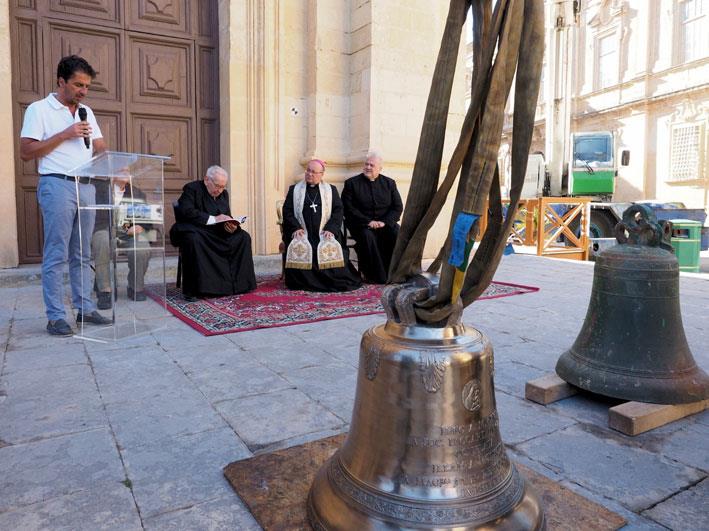
After Giuliano Cauchi; the bells of Taylor, Barigozzi and Pacard
With the seas now safe from pirates however, there was much less of a risk in commissioning bells from abroad. In fact after the First World War there is a boost in the commissioning of bells and we see foundries such as the Fonderia Barigozzi in Italy and the Paccard Bell Foundry in France. Barigozzi for instance made several bells such as Qala, Luqa and Sannat throughout the 1920s whilst Paccard founded the Msida bell in the same period. There was another explosion of commissions after the Second World War, but this time supplied by the English foundry of John Taylor, with the churches of Zejtun, Bahrija, Siggiewi, St. Gregory in Sliema, St. Dominic in Valletta and various others all commissioning new bells in 1946.
This all ties into the pattern of war and peace, which characterised bell founding in the time of the Order. There were boosts coinciding with the end of both the world wars in the 20th century, whilst even in the period of Giovanni Antonio Tanti one saw a boost in bell commissions after, for instance, the plague of 1813 which was a grave struggle for Malta. This was because the commissioning of such bells was done as a thanksgiving to God for the passing of the current hardship. “The cycle of patronage for new bells follows what the country is passing through”, Cauchi summarises.

Prevention is better than cure; the maintenance and restoration of bells
Of course Cauchi, more than an expert on the history of bells, is an expert on their restoration. However, he says, it is not normally the bell itself that requires restoration; it would be its fittings such as the clapper of the bell, the mountings and the beam that the bell hangs from that would normally need attention. These fittings need to be healthy, Cauchi explains. In the case of the clapper, which actually strikes the bell, for instance, with the deterioration that each ring brings, it moves downwards and as a result strikes the bell at a lower point. This lower point of the bell would be weaker and as a result could result in the actual cracking of the bell itself if not addressed. Indeed, the phrase ‘prevention is better than cure’ rings no truer than here; changing a fitting is of a manageable cost; but having to change the whole bell is an expense that will run into the thousands.
A lot of the time therefore most interventions focus on these fittings; but there are occasions when a lack of maintenance will transfer the problems onto the bell itself. This was what happened in the case of the bell that was recently removed from Mdina. The crown holding the bell rusted on the inside and deteriorated to the point that the bell itself was close to falling out of the belfry. Due to the historical prestige of the bell, it was decided that it should be retained in its original format and placed in a museum as opposed to being repaired; a decision which Cauchi calls “a proper one.”
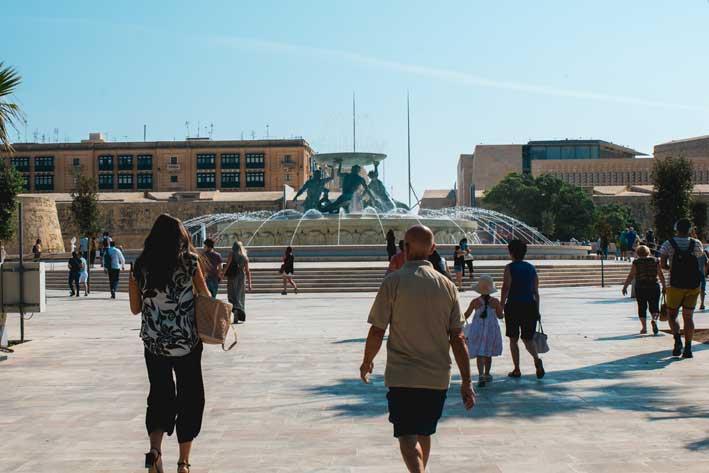
The challenge to restore one of Malta’s most iconic landmarks
Aside from specialising in bells, Cauchi was also the conservation and historical consultation for the restoration of the famous Triton Fountain in Valletta. The restoration of this landmark was a huge challenge and is unique, Cauchi tells me. The problems that the restorers faced with the actual Tritons themselves were “phenomenal”, and Cauchi explains that this was due to the fact that the fountain itself had flaws from the very day it was built.
Firstly, it was not made with a skeleton in the statues, meaning that the tritons were bearing the entire load themselves. There should have been an armature within the structure, but instead the internal parts of the statues were filled with concrete. Furthermore, the nature of the casting was very porous which meant that there were impurities in the material and that it was structurally weak. The concrete expanded over time and eventually cracked the statues, leading to them collapsing in 1978. In 1986, probably realising his initial mistakes, the same artist placed a central column in the middle of the three statues to take the load of the plate at the top of the fountain. Further restoration was later carried out by the Malta Drydock, but this was done from a point of view of ship repairs and so was simply focused on making sure the structures remain strong and stable.
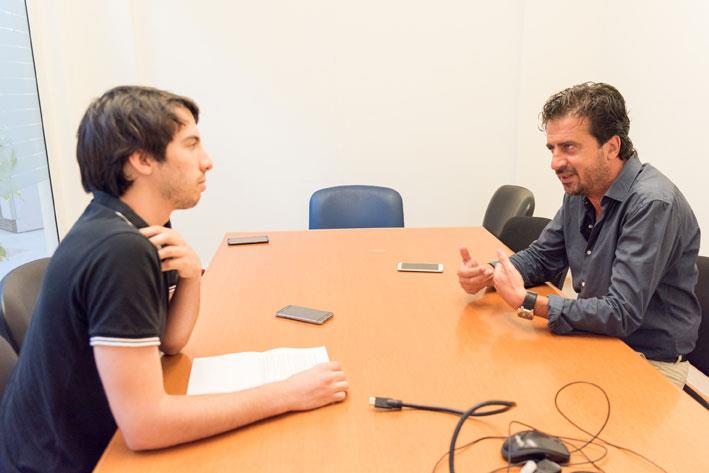
A new, professional approach to an old, important landmark
Cauchi however brought a new approach to this landmark. He comes from the art-historical background and has studied specifically how to restore monumental statutes. He is also qualified in restoring bells, which is done using the non-ferrous welding technique. This technique basically encapsulates welding with alloys, which is different to welding with normal metals. The fountain was cast using a mixture of copper and zinc, and hence it falls under the non-ferrous category.
Cauchi and his team were “consistent, persistent and insistent” in putting forward their proposals for the restoration of the fountain. Following Cauchi’s own method statement, the fountain was dismantled into 54 pieces, a process which took less than 48 hours, and the bottom parts which were filled with concrete were sent to the renowned Fernando Marinelli foundry, which was chosen from the tender to work on this project, for the concrete to be removed. This was done through the opening of little windows in the structure, with the aim of causing as little structural damage as possible. The Marinelli foundry is the same foundry responsible for making the gate of the Vatican City, and also a massive 17 metre statue of Alexander the Great in Macedonia. What was important in the choice of the foundry, Cauchi explains, is that the foundry could prove that its work can stand the test of time.
The eventual result was that when the Tritons were reconstructed, there was a discrepancy of just 3 millimetres. This discrepancy was corrected as where water is involved one has absolutely no room for error. Furthermore, the landmark was fitted with new technologically advanced equipment such as LED lighting, new inverter water pumps and a wind sensor which calculates the wind speed and programmes the pumps to use four different water flow settings in accordance with those calculations.
Was all this work a success therefore, I ask. To this final question, Cauchi simply answers; “the Tritons speak for themselves”.